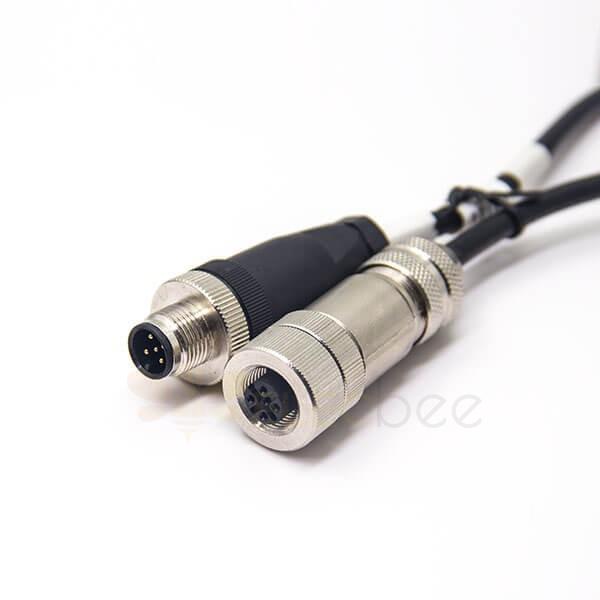M12 connectors are widely used in industrial automation, providing a compact and reliable solution for data and signal transmission in harsh environments. They come in different varieties, with shielded and unshielded versions being two of the most common options. Understanding the distinctions between these connectors is crucial for choosing the right one for your specific application. In this article, we'll delve into the primary differences between shielded and unshielded M12 connectors and discuss their respective advantages and disadvantages.
What are M12 Connectors?
Before we dive into the differences between shielded and unshielded connectors, let's briefly discuss M12 connectors. These are circular connectors that consist of a 12-millimeter locking mechanism, hence their name. They offer a robust and secure connection, making them ideal for use in various industries, including automation, transportation, and robotics. M12 connectors are designed to withstand harsh conditions, such as high temperatures, moisture, and vibrations.
Shielded M12 Connectors: A Closer Look
Shielded M12 connectors are characterized by a protective metal casing, typically made of materials such as nickel-plated brass or stainless steel. This shielding serves as a barrier against electromagnetic interference (EMI) and radio frequency interference (RFI), which can disrupt signal transmission and reduce overall performance.

Advantages of Shielded M12 Connectors
- EMI/RFI Protection: The primary benefit of shielded connectors is their ability to guard against EMI and RFI. This makes them suitable for applications in environments with a high level of electrical noise, such as manufacturing plants or transportation systems.
- Improved Signal Integrity: Shielded connectors help maintain signal integrity by reducing the effects of crosstalk and signal reflections, which can lead to data corruption or loss.
- Enhanced Durability: The metal casing of shielded connectors offers additional mechanical protection, making them more durable and long-lasting than their unshielded counterparts.
Disadvantages of Shielded M12 Connectors
- Higher Cost: Shielded connectors are typically more expensive than unshielded ones due to the added material and manufacturing costs.
- Increased Complexity: The installation process for shielded connectors can be more complex, as the shielding needs to be grounded correctly to ensure optimal performance.
Unshielded M12 Connectors: An Overview
Unshielded M12 connectors lack the protective metal casing found in shielded versions. As a result, they are more susceptible to EMI and RFI, which can impact their performance in certain applications.

Advantages of Unshielded M12 Connectors
- Lower Cost: Unshielded connectors are generally less expensive than shielded ones, making them a more cost-effective option for applications where EMI and RFI are not significant concerns.
- Simpler Installation: With no shielding to ground, unshielded connectors are easier and quicker to install.
Disadvantages of Unshielded M12 Connectors
- Limited EMI/RFI Protection: The lack of shielding in unshielded connectors makes them more vulnerable to EMI and RFI, which can degrade signal quality and result in data errors or loss.
- Reduced Durability: Without the metal casing, unshielded connectors may be less durable and more prone to damage from physical impacts or environmental factors.
Choosing the Right Connector for Your Application
When deciding between shielded and unshielded M12 connectors, it's essential to consider the specific requirements of your application. Here are some factors to keep in mind:
- EMI/RFI Levels: If your application is in an environment with high levels of electrical noise, a shielded connector is likely the better choice to prevent signal degradation and maintain reliable performance.
- Budget Constraints: If cost is a significant concern, unshielded connectors may be a more affordable option, provided that EMI and RFI are not significant issues in your application.
- Installation Complexity: If ease of installation is a priority, unshielded connectors offer a simpler process due to their lack of grounding requirements.
Conclusion
Shielded and unshielded M12 connectors each have their own set of advantages and drawbacks. By understanding the key differences between these two options, you can make an informed decision based on your application's specific needs. When EMI/RFI protection, signal integrity, and durability are critical factors, shielded connectors are the superior choice. However, if cost and installation simplicity are higher priorities, unshielded connectors may be the better option.

